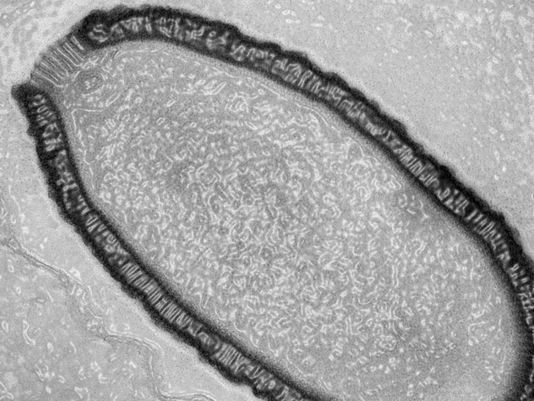30,000-Year-Old ‘Giant’ Virus Revived, ‘Pithovirus’ Thawed From Siberian Permafrost [PHOTO]

A 30,000-year-old virus locked in the Siberian permafrost has been revived, according to a new study.
The dormant virus, known as Pithovirus sibericum, was found in a 98-foot deep sample of frozen soil in Chukotka, near the East Siberia Sea in Russia's Far East. French researchers thawed the virus and replicated it in a petri dish by having it infect an amoeba. The discovery may mean that ancient viruses now locked in ice may be reintroduced as global temperatures rise.
"There is now a non-zero probability that the pathogenic microbes that bothered [ancient human populations] could be revived, and most likely infect us as well," study co-author Jean-Michel Claverie, a bioinformatics researcher at Aix-Marseille University in France, told LiveScience. "Those pathogens could be banal bacteria (curable with antibiotics) or resistant bacteria or nasty viruses. If they have been extinct for a long time, then our immune system is no longer prepared to respond to them."
The study, published in the Proceedings of the National Academy of Sciences, describes how the virus differs from any known today. Measuring 1.5 micrometers long by 0.5 micrometers wide, pithovirus is 30 percent bigger than the largest identified modern virus, the pandoravirus. The virus’ size may explain why it has remained intact for thousands of years.
"Among known viruses, the giant viruses tend to be very tough, almost impossible to break open," Claverie told National Geographic. "Special environments such as deep ocean sediments and permafrost are very good preservers of microbes because they are cold, anoxic [lacking oxygen], and in the dark."
After observing how the pithovirus spreads, researchers found it uses its own genes, proteins and enzymes to replicate. To infect, the pithovrius enters an amoeba, migrates to the wall of a chamber called a vacuole where it releases an unusual structure called a cork.
"Its function is to seal and protect the amphora-shaped particle, but as soon as it enters a vacuole, the cork is removed to initiate the infection," Chantal Abergel of Aix-Marseille University told New Scientist. "It allows the internal membrane of the virus to fuse with that of the vacuole."
The good news: The virus is only known to infect amoebas, not humans or animals. But its discovery raises the question of how pathogenic viruses may have the ability to infect humans.
"A very small proportion [of the viruses on Earth] represent viruses that can infect mammals and an even smaller proportion pose any risk to humans," Edward Mocarski, a professor of microbiology at Emory University not involved in the study, said.
While 30,000 years of survivability may sound like a lengthy amount of time, the researchers believe viruses can survive much longer.
“We are currently prospecting more ancient layers," the authors of the study wrote. "Thirty thousand years is most likely not the limit of viability for viruses."
© Copyright IBTimes 2024. All rights reserved.





















